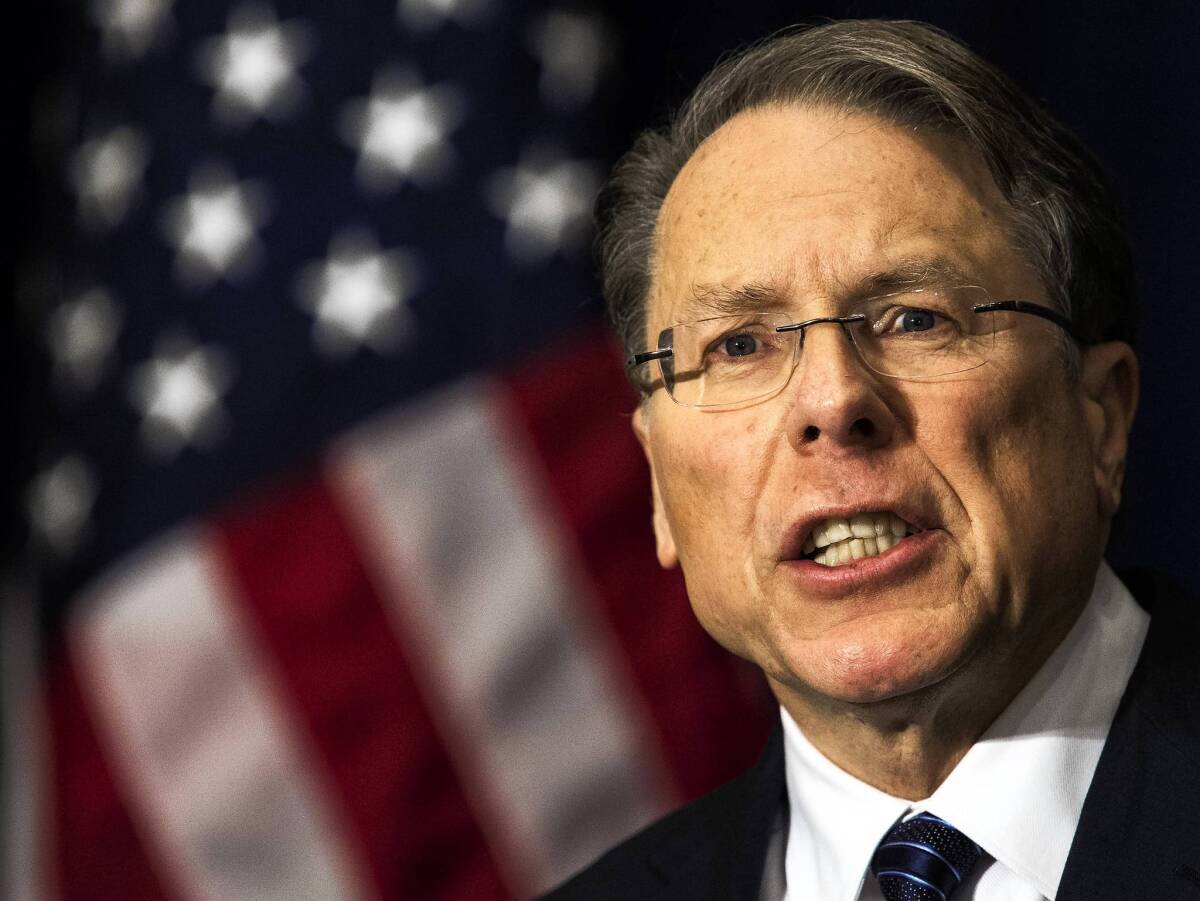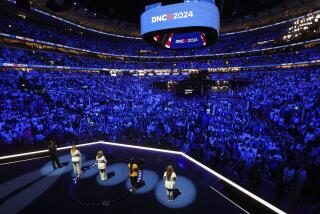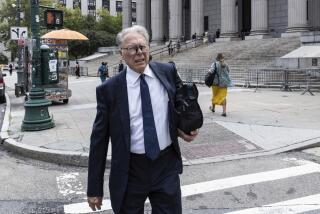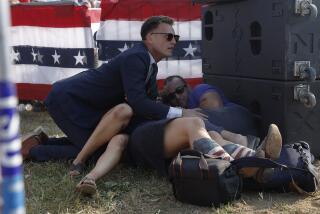NRA calls for armed guards in schools to prevent gun violence

WASHINGTON — In the week after the massacre at Sandy Hook Elementary School, as President Obama and Democratic lawmakers issued urgent calls for new restrictions on guns, America’s largest and most powerful gun lobby lay low.
But its silence did not mean the National Rifle Assn. had grown conciliatory.
When NRA Chief Executive Wayne LaPierre finally weighed in Friday, he delivered a lashing speech that attacked gun-free school zones, the media and violent movies and video games as he pledged his group would train a vast force of armed volunteers to protect the nation’s schools.
The NRA’s defiant stance underscored the pugilistic nature of the 141-year-old organization and its steadfast resistance to any efforts to curb gun sales or ownership. That battle is expected to begin in earnest as soon as next month, when a White House effort led by Vice President Joe Biden reports its recommendations on how to curb gun violence.
The gun lobby will be a key player in that fight and is increasingly seen as a partisan one, tightly aligned with the Republican Party — a view only heightened by LaPierre’s combative address.
It remains to be seen how that might affect the influence of the NRA, which easily swept back efforts to enact new federal firearms restrictions after mass shootings in the last decade. But the massacre of 20 first-graders and six staff members at the Newton, Conn., school on Dec. 14 has brought new energy to the long-stymied gun control movement.
LaPierre, speaking to the media in a hotel blocks from the White House, made clear that the NRA did not see any need to further regulate guns. “The only thing that stops a bad guy with a gun,” he said, “is a good guy with a gun.”
The real problem, he said, was Hollywood and video game makers, calling them “a callous, corrupt and corrupting shadow industry that sells and sows violence against its own people.”
Among the “blood-soaked films” he named was “Natural Born Killers.” The 1994 film’s director, Oliver Stone, noted that such films are seen around the world. “If movies caused gun violence, all countries would have the same levels seen in the U.S. They do not,” he said.
LaPierre’s proposal — that the NRA finance a project to deploy armed volunteers to every school — met with scathing responses from gun control advocates, educators and faith leaders, many of whom charged the group with failing to take responsibility for its role in gun violence.
“If there is a need for security at our elementary schools today, it is largely because the NRA’s Washington leadership has gutted the gun laws that used to keep schools and day-cares and churches safe,” said Mark Glaze, director of Mayors Against Illegal Guns.
In Congress, the reaction broke along partisan lines, with Democrats voicing strong disgust with the group’s tack while Republicans remained silent.
One of the most pointed responses was a post on Twitter by Chris Murphy, the Democratic senator-elect from Connecticut: “Walking out of another funeral and was handed the NRA transcript. The most revolting, tone deaf statement I’ve ever seen.”
The angry reaction from the NRA’s critics on the left highlighted how the group had moved right in its politics. The group historically has enjoyed bipartisan support, but it has increasingly allied itself with the GOP in recent years. This year, it pumped at least $12 million into a campaign to defeat Obama.
The White House had no comment Friday on the NRA’s news conference. In a video address posted on the White House website before LaPierre spoke, Obama asked for help passing laws banning the sale of military-style assault weapons and high-capacity ammunition magazines, and requiring background checks for all gun purchases.
Richard Feldman, a former NRA regional political director, said the group’s polarizing role in the debate had interfered with its message.
“Had the same words been uttered today by the heads of the National School Boards Assn. and the National Police Officers Assn., everybody would’ve been in the room going, ‘Uh huh, that makes sense,’” said Feldman, a frequent NRA critic who agrees with the school security proposal. “To the degree there’s going to be push-back, it’s going to be because the NRA said it.”
LaPierre made a nod to such sentiments in his speech, predicting that the media, “consumed by fear and hatred of the NRA and American gun owners,” would distort his words.
“More guns, you’ll claim, are the NRA’s answer to everything,” he said. “Your implication will be that guns are evil and have no place in society, much less in our schools. But since when did the gun automatically become a bad word?”
The NRA chief noted that armed security officers were stationed in front of banks, airports, courthouses and sports stadiums, and that armed Secret Service agents and Capitol police protect the president and members of Congress.
“Yet when it comes to our most beloved, innocent and vulnerable members of the American family, our children, we as a society leave them every day utterly defenseless,” he said. “And the monsters and the predators of the world know it and exploit it. That must change now.”
He called on Congress to immediately appropriate funding to pay for police officers in every school “to make sure that blanket safety is in place when our kids return to school in January.” He envisions for the long term a volunteer school security force.
Meanwhile, the NRA asked former U.S. Rep. Asa Hutchinson (R-Ark.), who also was undersecretary of the Department of Homeland Security, to lead a team of security experts to develop a model school safety plan.
Hutchinson said his team would operate independently “and will be guided solely by what are the best security solutions for the safety of our children while at school.”
“Armed, trained, qualified school security personnel will be one element of that plan, but by no means the only element,” Hutchinson said. He added that the program would not depend on local or federal funding, but would draw on volunteers.
The idea drew immediate criticism from gun control advocates, who noted that two armed police officers were on the scene of the mass shooting at Columbine High School in Colorado in 1999. They engaged in gunfire with Eric Harris, one of the shooters, but were unable to stop him.
“The idea of having armed guards has been tried and failed,” said Kristen Rand, legislative policy director of the Violence Policy Center.
Putting armed volunteers in schools carries risks, said Kevin Quinn, president of the National Assn. of School Resource Officers, which represents police officers who work in schools. The group is in favor of more armed police officers on campuses but not allowing staffers or volunteers to carry guns.
He said police responding to an emergency at a school “could run into an ID issue in terms of who is the good guy, who is the bad guy.”
The NRA plan also faces serious legal and political roadblocks. Federal law and the laws in most states prohibit firearms in and around elementary and high schools.
Still, there is broad support for beefing up police presence in schools. Jon Adler, president of the Federal Law Enforcement Officers Assn., who attended a White House meeting on gun violence Thursday, said his group supported assigning a uniformed, armed police officer in every school.
Sen. Barbara Boxer (D-Calif.) introduced two new bills this week to upgrade security in schools and reimburse governors who want to deploy National Guard troops to protect students on campuses.
She called on the NRA to support her legislation.
Lisa Mascaro, Christi Parsons and Richard Simon in the Washington bureau and John Horn in Los Angeles contributed to this report.
More to Read
Sign up for Essential California
The most important California stories and recommendations in your inbox every morning.
You may occasionally receive promotional content from the Los Angeles Times.











